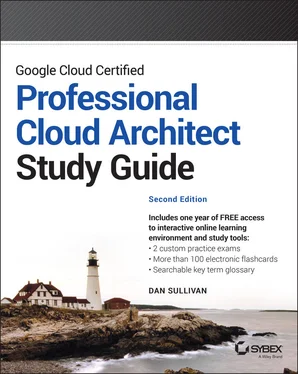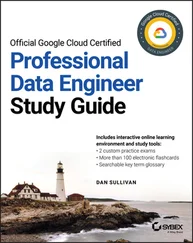Some regulations apply by virtue of the industry in which the business or organization operates. HIPAA governs healthcare providers and others with access to protected health information. Banks in the United States are subject to the Financial Services Modernization Act, also known as the Gram-Leach-Bliley Act (GLBA), specifying privacy protections for consumers' nonpublic financial information.
Regulations placed on data are often designed to ensure privacy and protect the integrity of data. A large class of regulations govern privacy. HIPAA, GLBA, GDPR, and a host of national laws are designed to limit how personal data is used and to provide individuals with some level of control over their information. More than 40 countries, the European Union, and Singapore have privacy regulations. (See www.privacypolicies.com/blog/privacy-law-by-countryfor a list of countries and links to additional information.) Industry regulations, like PCI DSS, also include protections for keeping data confidential.
From an architect's perspective, privacy regulations require that we plan on ways to protect data through its entire lifecycle. This begins when data is collected, for example, when a patient enters medical information into a doctor's scheduling application. Protected data should be encrypted before transmitting it to cloud applications and databases. Data should also be encrypted when stored. This is sometimes called encrypting data in transit/motion and data at rest .
Access controls should be in place to ensure that only authenticated and authorized people and service accounts can access protected data. In some cases, applications may need to log changes to data. In those cases, logs must be tamperproof.
Networks and servers should be protected with firewalls and other measures to limit access to servers that process protected data. With Google Cloud, architects and developers can take advantage of the Cloud Identity-Aware Proxy to verify a user's identity in the context of a request to a service and determine whether that operation should be allowed.
Security best practices should be used as well. This includes following the principle of least privilege , so users and service accounts have only the permissions that are required to carry out their responsibilities. Also practice defense in depth . That principle assumes any security control may be compromised, so systems and data should be protected with multiple different types of controls.
Data Integrity Regulations
Data integrity regulations are designed to protect against fraud. SOX, for example, requires regulated businesses to have controls on systems that prevent tampering with financial data. In addition, businesses need to be able to demonstrate that they have these controls in place. This can be done with application logs and reports from security systems, such as vulnerability scanners or anti-malware applications.
Depending on regulations, applications that collect or process sensitive data may need to use message digests and digital signing to protect data with tamper-proof protections.
Many of the controls used to protect privacy, such as encryption and blocking mechanisms, like firewalls, are also useful for protecting data integrity.
In addition to stated business requirements, it is a good practice to review compliance and regulations with the business owners of the systems that you design. You will often find that the security protections required by regulations overlap with the controls that are used in general to secure information systems and data.
Information security , also known as infosec and cybersecurity, is a broad topic. In this section, you will focus on understanding high-level security requirements based on business requirements. Chapter 7, “Designing for Security and Legal Compliance,” will go into more detail on cloud security measures.
Business requirements for security tend to fall into three areas: confidentiality, integrity, and availability.
Confidentiality is about limiting access to data. Only users and service accounts with legitimate business needs should have access to data. Even if regulations do not require keeping some data confidential, it is a good practice to protect confidentiality. Using HTTPS instead of HTTP and encrypting data at rest should be standard practice. Fortunately, for GCP users, Google Cloud provides encryption at rest by default.
When we use default encryption, Google manages the encryption keys. This requires the least work from customers and DevOps teams. If there is a business requirement that the customer and not Google manage the keys, you can design for customer-managed encryption keys using Cloud KMS, or you can use customer-supplied encryption keys. In the former case, keys are kept in the cloud. When using customer-supplied keys, they are stored outside of GCP's key management infrastructure.
Protecting servers and networks is also part of ensuring confidentiality. When collecting business requirements, look for requirements for additional measures, for example, if a particular hardened operating system must be used. This can limit your choice of computing services. Also determine what kind of authentication is required. Will multifactor authentication be needed? Start thinking about roles and permissions. Will custom IAM roles be required? Determine what kinds and level of audit logging are required.
Protecting data integrity is a goal of some of the regulations discussed earlier, but it is a general security requirement in any business application. The basic principle is that only people or service accounts with legitimate business needs should be able to change data and then only for legitimate business purposes.
Access controls are a primary tool for protecting data integrity. Google Cloud Platform has defined many roles to grant permissions easily according to common business roles. For example, App Engine has roles for administrators, code viewers, deployers, and others. This allows security administrators to assign fine-grained roles to users and service accounts while still maintaining least privileges.
Server and network security measures also contribute to protecting data integrity.
When collecting and analyzing business requirements, seek to understand the roles that are needed to carry out business operations and which business roles or positions will be assigned those roles. Pay particular attention to who is allowed to view and update data, and use separate roles for users who have read-only access.
Availability is a bit different from confidentiality and integrity. Here the goal is to ensure that users have access to a system. Malicious activities, such as distributed denial-of-service (DDoS) attacks, malware infection, and encrypting data without authorization (ransomware attacks), can degrade availability.
During the requirements-gathering phase of a project, consider any unusual availability requirements. With respect to security, the primary focus is on preventing malicious acts. From a reliability perspective, availability is about ensuring redundant systems and failover mechanisms to ensure that services continue to operate despite component failures.
Читать дальше












